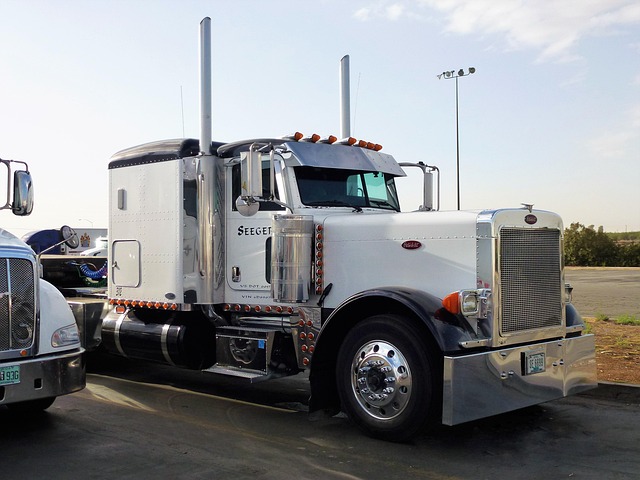Looking to register your car in California? This guide breaks down the process step-by-step, from understanding key requirements and gathering essential documents to completing the application and paying fees. A crucial part of the process is the DMV VIN (Vehicle Identification Number) verification, ensuring your vehicle’s authenticity. Follow these clear instructions for a seamless registration experience.
- Understand Requirements for Registration
- Gather Necessary Documents
- Perform DMV VIN Verification
- Complete Application Process
- Pay Registration Fees
Understand Requirements for Registration

Before registering your car in California, it’s crucial to understand the requirements for registration, which include ensuring that your vehicle meets safety and environmental standards. The first step is to obtain a Vehicle Identification Number (VIN) verification from the Department of Motor Vehicles (DMV). This process involves checking the VIN against the DMV’s records to ensure the vehicle’s history aligns with its claimed condition.
A mobile VIN verification, often conducted by a certified mobile vin inspector, can be particularly convenient in California. These inspectors use specialized tools to cross-reference the VIN with national databases, providing instant access to detailed vehicle information, including accident history, odometer readings, and previous owners. This thorough vin inspection ensures that you’re registering a safe and legitimate vehicle, which is essential for both legal compliance and personal peace of mind.
Gather Necessary Documents

Before you begin the registration process, ensure you have all the required documents ready. The California Department of Motor Vehicles (DMV) will need specific details and verifications to process your car’s registration. One crucial step is to obtain a DMV vin verification, which involves checking the vehicle identification number (VIN). This can be done through various methods, including mobile vin verification services that offer convenient and efficient solutions for those who prefer remote inspection.
Additionally, you’ll require proof of ownership, typically in the form of a title document, as well as valid identification like a driver’s license or state-issued ID card. If you’ve recently purchased the vehicle, ensure you have all the necessary bills of sale and purchase agreements. Some documents might be available online, but for sensitive information, it’s often best to request physical copies or utilize mobile vin inspection tools for added security.
Perform DMV VIN Verification

Before you can register your car in California, it’s crucial to have your vehicle’s VIN (Vehicle Identification Number) verified by the DMV. This process ensures that your car is genuine and meets all safety standards. You can perform this dmv vin verification at any California Department of Motor Vehicles (DMV) office or, for added convenience, utilize a mobile vin verifier. These mobile services send an inspector to your location to conduct a thorough inspection, making the process even more accessible.
The mobile vin inspection involves having a trained professional check over your vehicle and confirm its VIN integrity. This is particularly useful if you’ve recently purchased a car or have an older model that requires special attention. By completing this step, you’re one closer to legally registering your car in the Golden State.
Complete Application Process

To complete the car registration process in California, you’ll need to go through a series of steps that ensure all vehicle documents are in order and the vehicle itself meets safety standards. The first step is to gather all necessary documents, including proof of insurance, proof of ownership, and a valid driver’s license. Once you have these, it’s time to schedule a DMV visit or utilize an online portal for efficient processing.
During your appointment or digital transaction, you’ll complete the Application for Title and Registration (Form DV305). Here, you’ll provide detailed information about your vehicle, including its make, model, year, and unique Vehicle Identification Number (VIN). A crucial part of this process involves the DMV’s VIN verification, ensuring the accuracy of the VIN to prevent fraud. You may opt for a traditional vin inspection or consider using a mobile vin verifier for added convenience.
Pay Registration Fees

Registering a car in California involves several steps, and one of the crucial aspects is paying the registration fees. These fees cover various costs associated with maintaining accurate vehicle records and supporting road infrastructure. The process typically begins with a visit to the Department of Motor Vehicles (DMV) or their online platform. Here, you’ll need to provide essential details about your vehicle, including its make, model, year, and unique Vehicle Identification Number (VIN). A key part of this process involves conducting a VIN verification, often facilitated through the DMV’s digital systems, ensuring the vehicle’s information aligns with manufacturer records.
To streamline the process, many individuals opt for mobile VIN verification or inspection services, which allow them to complete the initial checks remotely. This modern approach, leveraging technology, simplifies registration by eliminating the need for in-person visits and potentially saving time. Ensure you understand the specific fees applicable to your vehicle category, as they can vary based on factors like age, use (personal or commercial), and fuel type. Properly completing this step guarantees that your car’s registration is accurate and compliant with California’s regulations.
Registering a car in California involves understanding key requirements, gathering essential documents, completing a straightforward application process, and paying corresponding fees. After ensuring your vehicle meets state standards through a crucial DMV VIN verification step, you’ll be well on your way to securing a registration certificate for smooth legal operation of your vehicle within the Golden State.
